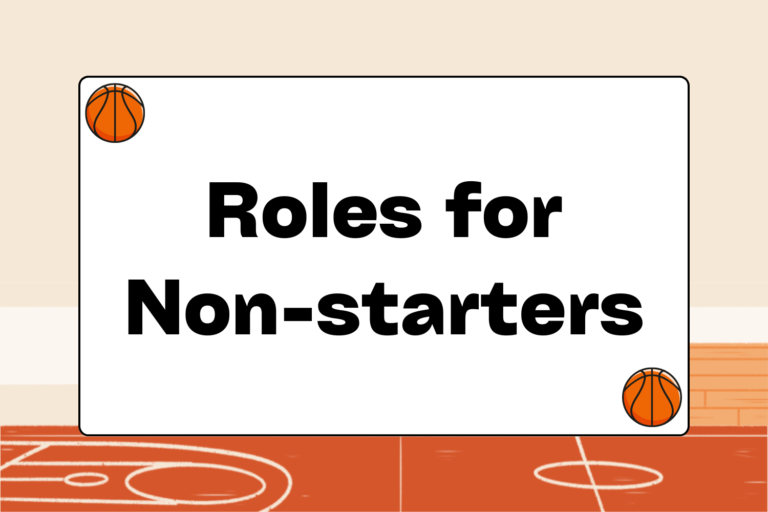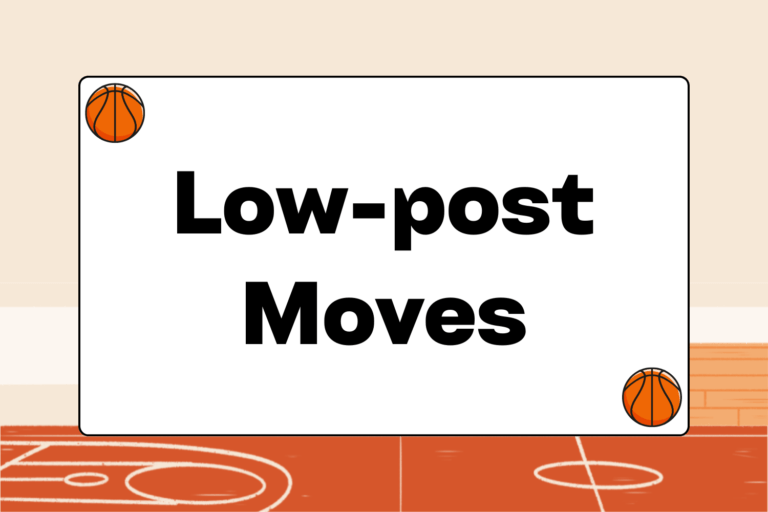Despite coaches’ constant insistence on the strong correlation between rebounding and winning, many players continue to overlook the importance of crashing the boards. It may not be a glorious endeavor, but a team’s ability to rebound is directly related to their success. The reason for this is simple: Rebounding is the primary way to gain or maintain possession of the ball. And the more possessions you have, the more opportunities your team has to score.
Rebounding Fundamentals
Any player, no matter their offensive or defensive limitations, can excel at rebounding. Dominant rebounders need to play aggressively, but they should also understand rebounding fundamentals and positioning. Regardless of your stature, you’ll control the boards once you practice and apply these techniques.
Follow the steps below to put yourself in the proper position to rebound:
Step 1: Adopt a Rebounder’s Mentality
Being a great rebounder doesn’t require height or even great jumping ability. Charles Barkley—a prominent NBA player in the 1980s and 1990s—routinely grabbed boards over taller players, and at 6 feet, 5 inches, he is the shortest player to have led the NBA in rebounds (1986-87 season). What is required, however, is tenacity and desire. Elite rebounders have an insatiable desire to get the ball. Therefore, the first step on the road to becoming a rebounding machine is adopting the rebounder’s mentality.
But even the most determined player will be at a huge disadvantage if they are not ready for the rebound. The best way to make sure that you’re always prepared to grab any board is to assume that every shot taken will be missed. If you approach every shot taken as a chance to rebound, then you’ll never be caught unprepared.
Step 2: See the Shot, Call the Shot
This may seem like an obvious step, but too often players (especially beginners) lose track of the ball and/or the shooter while scrambling to play defense. Rebounders can ascertain pertinent information—like the direction and probable distance of the rebound—by watching the trajectory of the ball after it leaves the shooter’s hands.
You should also get into the habit of calling out “Shot!” whenever an opposing play shoots the ball. This call will alert teammates that a shot has taken place.
Step 3: Box Out
Once the shot is airborne it’s time to box out the opposition. The term “boxing out”—also called blocking out—refers to the momentary action that impedes the opponent’s path to the ball. The most important concept for beginning players to grasp is that the purpose of blocking out is to gain a positional advantage.
More often than not, the player closest to the basket is the one who comes up with the rebound—that said, anytime a shot is taken, a good rebounder should do everything in their power to get between the opponent and the basket.
A study comparing NBA teams’ rebounding and winning percentage over a span of 10 years found that teams that out-rebounded their opponents were victorious 80% of the time.
One of the most effective ways to block out the opponent is by executing a front pivot once the shot goes up. This move will put the opponent behind you and put you in an ideal position to secure the board. You could also choose to box out while facing the opponent. The majority of the rebounding work should be done before the shot even touches the rim. Here are a few pointers about boxing out to keep in mind:
- Make contact: The importance of finding your opponent and immediately making contact with that player cannot be over emphasized. Maintaining contact with the person you are blocking out allows you to determine where that player is, which in turn gives you the ability to get inside position.
- Keep a low and wide stance: The primary goal is to block an opponent’s access to the ball. Maintaining a wide stance allows you to take up more space, thus making the opponent’s task—getting around you and to the ball—that much more difficult.
- Extend arms outward: Stretching your arms will also create a bigger obstacle for the opponent trying to get around you.
- Create leverage: Establishing leverage will allow you to hold your ground against stronger and taller players.
Step 4: Grab the Ball
.jpg)
Step 5: Protect the Ball
There’s no doubt about it, rebounding can be exhausting—it is a lot of work. The last thing you want to do after struggling to grab a board is turn over the ball, but unfortunately, this happens far too often. A player might make an excellent effort to secure the rebound, and because of poor ball protection, give the ball right back to the other team. Adopting good ball protection habits will prevent this from happening to you.
Step 6: Make the Outlet Pass
Rebounding is strongly correlated to winning because more rebounds translate into more scoring opportunities. The outlet pass to the guard is the first step in taking full advantage of those chances. A quick outlet will allow you to get a jump start on the defense.
Reap the Benefits
Mastering the fundamentals of rebounding will make you a good rebounder, but it’s the intangibles—desire and tenacity— that will separate the elite rebounder from the average one. The old cliché—where there’s a will there’s a way—is true when it comes to rebounding. So take the tips outlined here to heart and you’ll be pulling down boards in no time.





